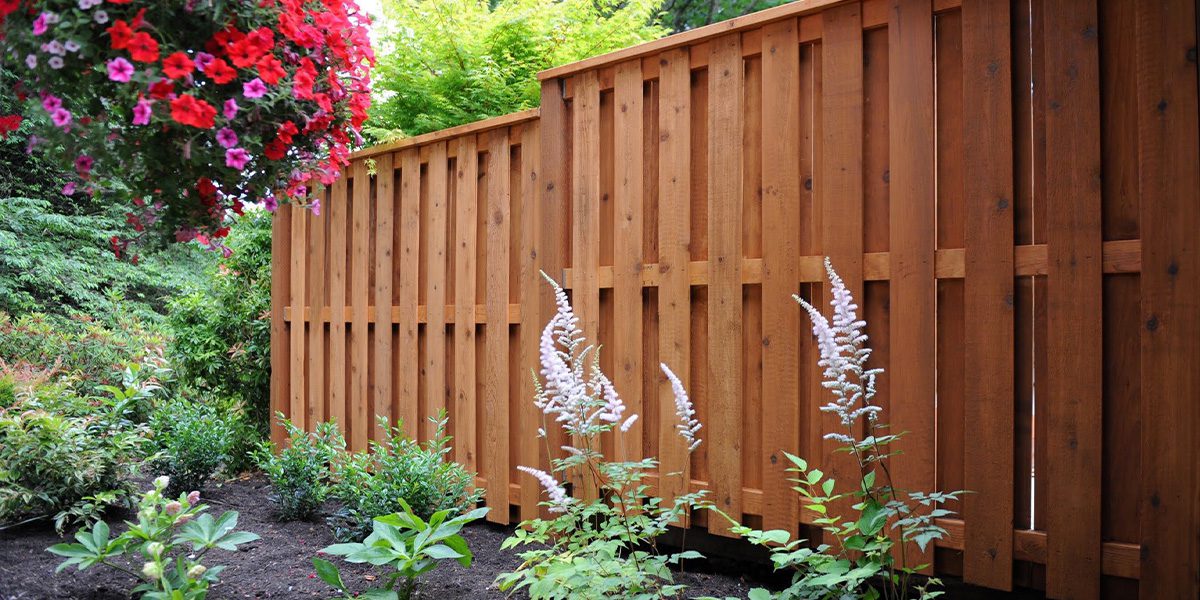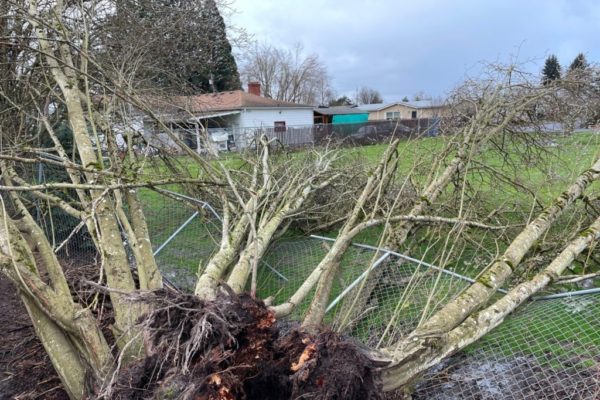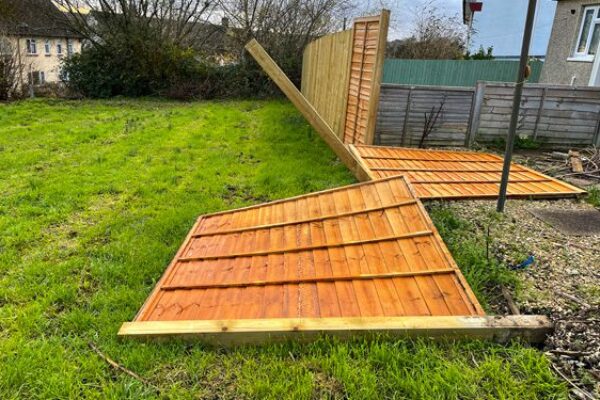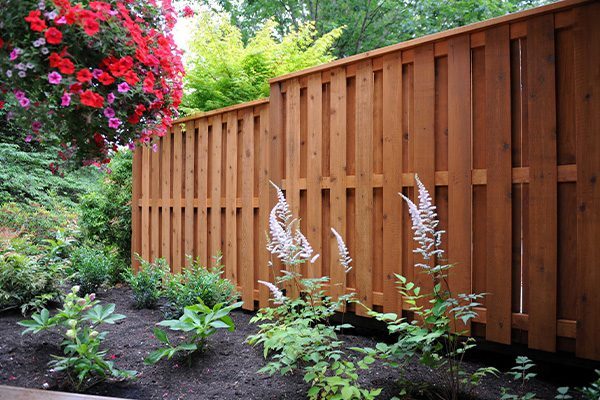Fence Maintenance Tips for Spring in Oregon and Washington

Spring in the Pacific Northwest means more sunshine, so it’s the perfect time for seasonal fence maintenance in Oregon and Washington. While you may be eager to dig into gardening or refresh your landscape, don’t overlook your fence—it likely endured many days of harsh weather over the winter months. Regular maintenance is important because it can protect your wood or vinyl fencing from moisture damage, moss, and other common issues.
In this guide, we’ll cover why spring is the perfect season for fence maintenance, give you an inspection checklist, and provide tips for cleaning, DIY repairs and maintenance, and finding local contractors.
Why spring is the perfect season for fence maintenance in the PNW
If you live in cities like Hillsboro or Salem, you know spring isn’t just a season—it’s a long-awaited break from gray skies and wet weather. As you welcome back the sunshine, it’s also the ideal time to give some TLC to your fence. Since you’ll soon spend plenty of time outdoors, springtime makes perfect sense for fence maintenance in our unique Pacific Northwest climate.
Recover from winter moisture, mold, and mildew
Winters here are notoriously damp, and your fence has just endured months of soaking rain and chilly temperatures. That moisture can seep deep into the wood, causing mold, mildew, or even rot. Taking the time to clean and inspect your fence as soon as the weather warms up can prevent small winter damage from becoming big headaches later.
Prepare your fence for more outdoor activity
Warmer weather means more backyard barbecues, kids playing outside, gardening, and gatherings. Your fence plays a big part in your outdoor living space, providing privacy, safety, and visual appeal. Taking care of your fence in early spring keeps it looking its best for the entire sunny season. Plus, checking for loose boards or sharp nails now can help keep your yard safe and prevent unexpected mishaps.
Extend your fence’s lifespan
Regular maintenance can really extend the lifespan of your fence. Given the constant moisture and changing temperatures in places like Gresham, Salem, and Vancouver, a fence can deteriorate faster than you think without proper care. Taking proactive steps in spring, such as sealing, staining, or repainting—helps protect your fence from harsh weather throughout the year.
Spring fence inspection checklist
Now that warmer weather has arrived, it’s time to inspect your fence thoroughly. Grab your coffee, put on your boots, and use this quick checklist to spot common fence issues:
- Walk the perimeter.
Stroll around the fence and take a good look. Notice any signs of trouble—leaning posts, sagging sections, or visible damage. - Check fence posts carefully.
Gently push on each post. If it moves or feels wobbly, it probably needs reinforcing or replacing. And remember Rick’s offers metal posts as an option to wood. - Look for rot and moisture damage.
Inspect areas near the ground where wood meets soil, where rot usually begins. Poke gently with a screwdriver; soft, flaky wood means trouble. - Inspect boards and rails.
Run your hand along the fence boards, feeling for warping, splits, cracks, or splinters. These are signs of damage, and that your boards should be replaced sooner rather than later. - Spot mold, mildew, and moss.
If you see greenish or black stains, that’s mold or mildew from the wet winter—plan to pressure-wash or scrub clean soon to avoid permanent staining or wood damage. - Check all hardware—nails, screws, hinges, latches.
Tug gently at fence sections and gates. Listen for rattles and squeaks, and tighten or replace rusty, loose, or missing hardware. - Open and close gates repeatedly.
Gates should swing freely without dragging. If they don’t, adjustments or new hinges may be needed. - Look closely for signs of pests.
Inspect wood closely for tiny holes, sawdust piles, or insect trails indicating termites or carpenter ants. Call a pro quickly if you spot these signs. - Check for leaning sections.
Stand back and observe the fence line. Sections leaning outward or inward indicate weakened posts or unstable ground conditions—address these quickly before they worsen. - Make a simple action list.
As you inspect, jot down notes on what needs fixing. Tackling small issues now can prevent bigger (and pricier!) repairs later.
How to clean your fence after a wet winter
The odds are that your fence isn’t looking its best after a long, wet winter and needs a refresh. Luckily, cleaning your fence doesn’t have to be a weekend-consuming chore. With a bit of work, your fence can look as good as new.
Pressure washing your fence: dos and don’ts
Pressure washing can quickly remove grime, mold, and moss—but there’s a right way to do it:
- DO start on the lowest pressure setting. Gradually increase it if needed, but stay gentle to avoid damaging the wood surface.
- DO keep the nozzle about a foot away from your fence boards to prevent splintering or gouging the wood.
- DO move the washer in smooth, even strokes, going with the grain of the wood.
- DON’T use excessive pressure; too much force can strip off paint, stain, or even chunks of wood.
- DON’T linger too long in one spot, as this can cause noticeable marks or uneven cleaning.
- DON’T pressure wash rotted or damaged areas— repair them first.
Eco-friendly solutions to remove moss and mold
If you’re trying to stay green while keeping your fence clean, you’ve got options. A simple solution of vinegar and water (50/50 mix) works great for killing moss and mold. Spray it generously, let it sit for about 20 minutes, then gently scrub or rinse it off.
For tougher mold spots, mix baking soda with water to form a thick paste, apply it directly onto the affected areas, let sit briefly, then scrub with a soft-bristle brush.
Avoid using harsh chemicals that could harm nearby plants, pets, or wildlife. Products labeled as eco-friendly, biodegradable, or plant-safe are best—and plenty of good options are readily available in local Oregon and Washington hardware stores.
How often should you clean your fence in Oregon and Washington?
Considering the wet winters and damp conditions of places like Vancouver, it’s a good idea to clean your fence at least once a year—ideally in spring. If your yard is particularly shady or prone to moss buildup, a second lighter cleaning in late fall can also help prevent heavy winter growth. This routine will help your fence look great, stay sturdy, and add curb appeal to your home all year.
Easy DIY fence repairs and maintenance for homeowners
Once you’ve created a list of what needs maintenance, it’s time to begin working on repairs. With a few tools and a little effort, you should be able to handle any minor issues.
Replace damaged fence boards or pickets
Before you remove fence boards or sections, you’ll want to make sure you have their replacements. Start by taking inventory of what needs replacing, then order what you need from a local fence board supplier. Once you have the replacements on site, you can take these simple steps:
- Gather your supplies: Grab replacement fence boards, a hammer or cordless drill, galvanized nails or weatherproof screws, a tape measure, and a saw.
- Remove damaged boards: Carefully pry off the damaged pickets or fence boards. If stubborn nails remain, pull them out gently to avoid splintering neighboring wood.
- Cut and install replacements: Measure the opening, cut your new fence boards to the correct length, and attach them securely. Use galvanized or stainless-steel screws or nails to resist rust.
- Finishing touches: If your fence is stained or painted, treat the new boards to match. It’ll look seamless—and no one will notice your quick fix.
Tighten or replace hardware
After you’ve made any panel replacements, you can tackle small maintenance issues such as:
- Check hinges, screws, and gate latches: These small parts often loosen or rust, especially after a wet PNW winter. Give your gates and fence panels a gentle shake to spot loose components.
- Tighten up: Grab your screwdriver or drill and tighten screws that have loosened. Replace rusty hardware—local hardware stores have weather-resistant replacements for outdoor conditions.
- Oil moving parts: Applying a bit of lubricant or WD-40 to hinges and latches helps keep gates swinging smoothly and quietly all year.
Re-secure fence posts after heavy rains
If you have leaning fence posts, they should be addressed, as they can affect the fence’s integrity or be signs that your fence may need major repairs or replacement. Start by giving your posts a gentle push; if they move, they need reinforcing.
Pack gravel or small rocks around the base of any loose posts to apply a temporary fix. For a longer-lasting repair, dig around the post about 6-8 inches deep, realign it straight, and fill the space with quick-setting concrete. While these fixes may provide fixes, you may want to get an opinion from a fencing contractor before the structure of your fence is beyond repair.
How to protect your fence from PNW weather
To keep your fence healthy and looking great, regularly apply a quality waterproofing sealant—ideally every two to three years in rainy regions—to prevent moisture damage, rot, and mold. Watch for signs of fading or peeling paint and stain, and plan to repaint or stain your fence as soon as these symptoms appear, typically every three to five years, for lasting protection and curb appeal.
For more on protecting your fence, check out Rick’s guide to staining your fence or deck.
When to call a local fence maintenance contractor
Deciding between DIY fence maintenance and hiring a professional often depends on the task and your comfort level. Simple jobs—like tightening hardware or cleaning mold and mildew—are usually manageable and budget-friendly DIY projects. For more extensive repairs, like resetting multiple fence posts, handling significant rot, or tackling partial installations, it’s best to call a professional.
When choosing a fencing contractor, start by checking their local reviews online—look specifically for comments about reliability, communication, and quality of work. A reputable contractor will also happily share proof of insurance and clearly outline their warranties, workmanship guarantees, and the specific products they recommend for our unique regional climate.
Ready to start your journey to a better fence? Rick’s fencing contractors are here to help with all your fencing needs. Reach out for a free estimate, or give one of our locations a call to get the fencing support you need.


